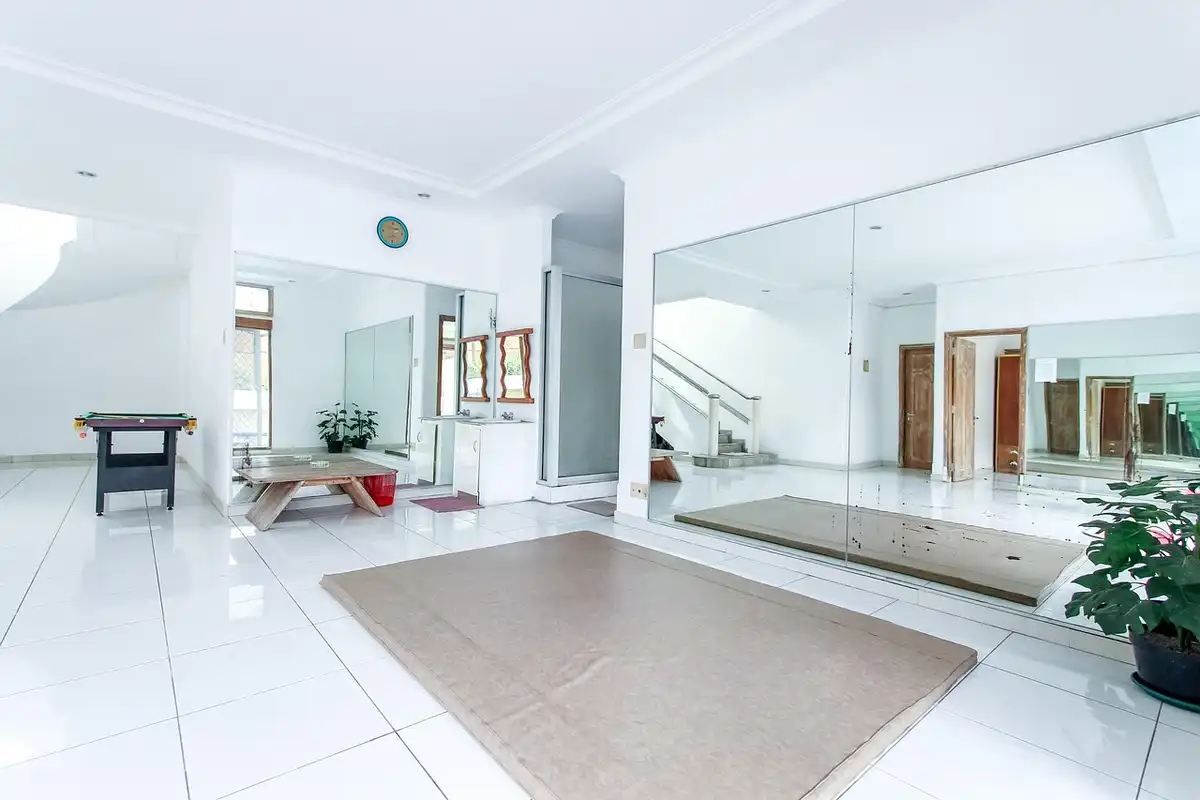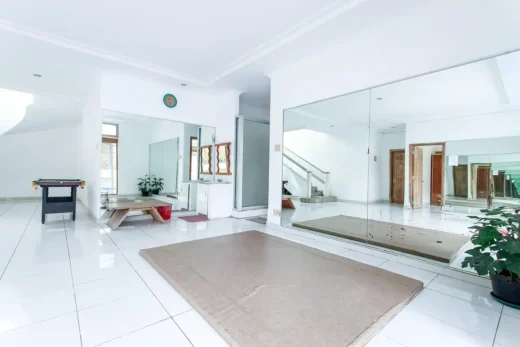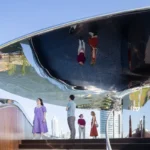How play is reshaping interior architecture guide, Property home games room advice
How Play Is Reshaping Interior Architecture
9 June 2025
Designing for Leisure: How Play Is Reshaping Interior Architecture
For decades, architecture served as a response to function. Efficiency, flow, and sustainability have been the watchwords of spatial planning and interior design. But a quiet revolution is taking place: the integration of play, leisure, and presence into the architectural blueprint itself. This isn’t about indulgence or distraction. It’s about designing homes and increasingly, workplaces, that reflect the full spectrum of human experience.
The cultural lens on space is shifting. Post-pandemic priorities have recalibrated what “home” means. Clients now expect more from their private spaces: comfort and context. Rooms must support stillness and stimulation, work and warmth. In this new brief, leisure is no longer an afterthought but a core design principle.
The Return of Leisure as a Central Design Brief
Across Europe, architects are reporting a marked increase in briefs that place leisure at the centre of design conversations. Home gyms, media lounges, hobby studios, and gaming spaces are being integrated with greater architectural intent. The era of the separate, siloed “games room” is giving way to fluid zones where recreation coexists with the rest of daily life.
Home Games Room, a UK-based home entertainment brand, has observed a marked increase in client interest in entertainment features that blend seamlessly into their interior vision. These features are no longer afterthoughts; they’re part of the architectural brief.
This shift speaks to more than trend-following. It reflects a return to spatial honesty: homes designed to accommodate what people actually do. And increasingly, they want to play with purpose.
From Function to Feeling: The Expanding Role of Architecture
Architecture has always been tasked with solving problems, light, flow, efficiency, and sustainability. But as domestic environments take on broader roles in people’s lives, the brief is evolving. It’s no longer just about how space works, but how space feels.
Clients are now asking for more than practicality. They want spaces that support joy, intimacy, and ease, qualities that can’t be measured in energy ratings or blueprint annotations. Leisure, in this context, becomes a way to humanise structure, to shape not just behaviour but emotional rhythm.
This doesn’t diminish the architect’s role; it amplifies it. Design must now account for the subtleties of human engagement, not just what a room does but what it encourages. Play becomes one of the tools in this expanded vocabulary, not as novelty but as a framework for experience.
Contextual Design & Emotional Function
Architecture doesn’t only shape buildings, it shapes behaviour. Designing for play is ultimately about designing for presence: for how people relate, decompress, and reconnect with both space and one another.
As ArchDaily explores, contextual design can transform even utility spaces into emotionally intelligent environments. In that context, leisure isn’t a decorative add-on, it’s part of a room’s psychological architecture.
Thoughtfully integrated gaming spaces, for instance, provide more than visual interest. They encourage movement, interaction, and even ritual, all of which foster a stronger emotional connection to the built environment. They become part of the daily choreography of a home, not an anomaly within it.
Objects with Intent: Rethinking the Role of Leisure Furniture
As architecture evolves to reflect how people live and why they live that way, the role of furniture is being redefined. It’s no longer seen as the final layer, the garnish applied post-construction. Furniture is increasingly considered early in the design process, valued for how it shapes perception, purpose, and use.
This is especially true for leisure-focused pieces. When thoughtfully selected and spatially integrated, these objects contribute more than utility; they influence the room’s tempo. They introduce pause and presence into architectural compositions that might otherwise prioritise flow and transition.
Leisure furniture is also highly narrative. Unlike storage or seating, which can fade into the background, objects designed for play tell a story. They say something about the person who lives there, the values that shape the home, and the type of interaction the space is designed to support.
These pieces are no longer novelties. They are deliberate decisions, sometimes sculptural, sometimes interactive, always expressive. And it’s in that context that one of the most recognisable forms of leisure furniture is being reimagined not just as a game, but as architecture.
Furniture as Structure: The Case for Pool Tables
Traditionally viewed as accessories, leisure furnishings are now being reconsidered as spatial anchors, particularly in open-plan environments. Few objects embody this transformation more clearly than the pool table.
As Dezeen recently noted, architect-designed furniture increasingly blends structure, form, and aesthetic intent. Pool tables exemplify this synthesis: they’re large enough to influence layout, functional sufficient to justify presence, and refined enough to blend with high-concept interiors.
Today’s design-led pool table is a far cry from the faux-leather models of the past. Think blackened oak with low-sheen finishes, powder-coated steel legs, or minimalistic matte textures that reference industrial design language. In some cases, they’re bespoke commissions, made to measure and built into the very concept of the room.
Reframing Function: Leisure Furniture as Spatial Anchors
Beyond materiality, the pool table introduces an architectural rhythm that traditional furniture often lacks. Its proportion, placement, and interaction zone demand consideration from the early stages of a floor plan, not just during post-build furnishing.
In the context of a kitchen-lounge hybrid or a converted open-plan barn, a well-placed table can bridge zones without blocking light or flow. It establishes a locus, a reason for movement, pause, and gathering, in a space that may otherwise feel overly fluid or undefined.
There’s also a behavioural element to consider. Whereas sofas and dining tables suggest passive or linear engagement, a pool table invites circulation. Guests move around it, conversations shift angles, and spatial awareness becomes part of the experience.
More architects are leaning into this dynamic. Instead of treating the object as a constraint, they’re using it as a sculptural and social tool. The result is a space that doesn’t just function, it participates.
This perspective shift is driving renewed interest in the pool table as an intentional, integrated design object. One that belongs not in isolation but in dialogue with its environment.
Zoning Without Walls
As open-plan living becomes the norm in contemporary residential design, the challenge of subtle zoning has become more prominent. When integrated with spatial awareness, the pool table provides a solution that’s as functional as it is aesthetic.
Placed correctly, it defines a shift in energy within a larger room. Unlike structural barriers, it doesn’t interrupt flow. Instead, it introduces purpose and hierarchy. A kitchen-diner transitions naturally into a games area. A lounge bends gently into a shared activity zone. The space remains connected, but each area retains its own emotional identity.
In studios, converted barns, and multi-functional spaces, this kind of fluid zoning is essential. The furniture must do more than fill space; it must orchestrate it.
Designing for the Senses: Beyond Visual Harmony
Spatial design is no longer evaluated solely on how it looks but on how it feels to inhabit. Texture, acoustics, weight, and even temperature play increasingly significant roles in how people engage with their environments. As homes evolve into multi-use spaces, the sensory narrative of each object within them has to work harder.
Designing for leisure magnifies this challenge. A furniture piece intended for play must hold a tactile presence that invites touch, movement, and routine use. It should neither dominate the space nor disappear into it. Instead, it should feel inevitable, as though the room was always meant to host it.
In this context, surface finish, edge detail, and even acoustic dampening matter. A visually stunning piece that echoes harshly in a high-ceilinged room may undermine the sense of comfort. A surface that’s too cold or too reflective might discourage use. The design of leisure isn’t just structural, it’s sensory.
This growing awareness sets the stage for more thoughtful material integration, where aesthetics meet emotion and cohesion is measured by how well things feel, not just how well they match.
Material Cohesion & Aesthetic Integration
Materiality is no longer just about surface finishes. It’s about sensory narrative, how a space feels, behaves, and responds to use. A leisure object that disrupts this material language feels intrusive. One that reflects and extends it, however, becomes part of the whole.
Modern leisure tables are being clad in materials that mirror wider architectural trends: textured timbers, muted metals, and performance-grade fabrics that echo bespoke upholstery. Even colour palettes are being chosen to align with tones already present in flooring, cabinetry, or structural elements.
Vogue UK’s 2025 interior trends report highlights a shift toward emotional aesthetics and tactile warmth, a movement echoed in the design of high-end leisure pieces.This isn’t about softness for its own sake but inviting interaction. And furniture designed for leisure needs to carry that invitation naturally.
Designing With Play in Mind: A New Brief for Residential Architects
In today’s high-end residential design, play is no longer an afterthought, it’s part of the architectural brief. Architects are increasingly being asked to consider not just where leisure elements go, but how they interact with a space’s flow, material story, and emotional tone.
For many clients, these features now hold the same status as a kitchen island or a statement staircase. They’re functional, social, and expressive, but most importantly, they must integrate seamlessly with the interior design vision.
A well-specified pool table, for instance, may now be chosen to echo the timber used in flooring, or to complement the tone of bespoke cabinetry. In some cases, architects are specifying models in matte black steel, brushed oak, or natural stone finishes, not to make them disappear, but to let them ground a room with intentional weight.
Spatial planning has also adapted. Leisure furniture often anchors open-plan living zones, offering a subtle division between lounge and circulation areas without needing partitions or walls. In homes where minimalism dominates, a single, beautifully crafted leisure feature can add visual rhythm, breaking repetition while reinforcing geometry.
As one London-based residential architect told us, “The clients who ask for a pool table in their plans aren’t asking for fun. They’re asking for a connection.
They want a space where people naturally gather without being told to.”
That mindset is changing how design is approached. Play isn’t decorative, it’s relational. It affects how a room feels, how people use it, and how often it’s occupied.
Architects who respond to that brief, treating leisure with the same design rigour as lighting or built-ins aren’t pandering to trends. They’re future-proofing human spaces.
Architects Designing for Experience, Not Just Form
Today’s most forward-thinking architects understand that spatial success can’t be measured solely in square metres or light quality. It’s measured in engagement. Whether a space draws people in, holds their attention, or invites repeated use.
Designing with leisure in mind allows for a richer spectrum of living. When games, music, movement, and social interaction are part of the brief, the result is a home that lives like its owners do.
It also means designing for the intangible: for joy, for presence, for memory. A leisure object, when chosen well, can become a site of family tradition, of morning ritual, of evening decompression.
This doesn’t detract from architectural discipline; it expands it.
The Psychology of Space and Play
While materials and layout matter, the actual value of integrating leisure into architectural design lies in how it makes people feel. Spatial psychology, how people interact with, move through, and emotionally respond to space, increasingly influences residential and commercial briefs.
In traditional design, play and recreation were delegated to basements, spare rooms, or hidden spaces. But newer psychology-informed architecture places human experience at the forefront. That means designing for rest, interaction, and reset, not just productivity or aesthetics.
Well-integrated leisure features signal permission to slow down. When placed intentionally, they encourage occupants to re-engage with their environment. Whether it’s a sculptural bookshelf, an informal games setup, or a visible object of interaction, these cues offer more than visual interest; they create behavioural shifts.
Spatial theorists and environmental psychologists have long noted the impact of “active anchors” in home layouts, focal points that invite presence, movement, and casual connection. Architects who incorporate leisure into the core layout rather than tucking it away are designing not just rooms but rituals.
In that sense, designing for play becomes designing for wellness, something increasingly requested in post-pandemic briefs. And that request doesn’t come from interior decorators. It comes from the architects drawing the very first lines.
Designing with Play in Mind Is Designing for Real Life
Designing for leisure is no longer just about functionality. It’s about creating spaces that reflect how people want to live, connected, relaxed, and present. When architects approach play with the same design discipline they apply to kitchens or lounges, the result isn’t gimmicky, it’s emotionally intelligent architecture. And in that context, the pool table isn’t a novelty, it’s a perfectly rational, beautifully crafted decision.
Comments on this guide to How play is reshaping interior architecture article are welcome.
Building Drainage
Drainage and Plumbing Posts
Why Microbes and Bacteria are Essential for Your Septic System

image source : freepik.com
Ultimate Drainage Infrastructure Guide
Home Articles
Residential Architecture
Comments / photos for the How play is reshaping interior architecture advice page welcome.






